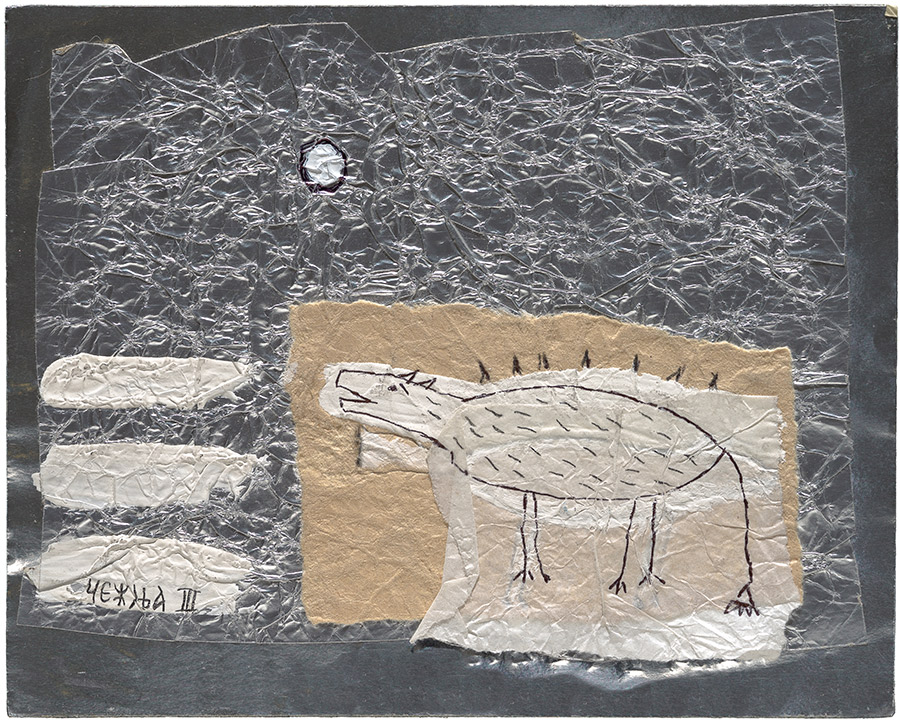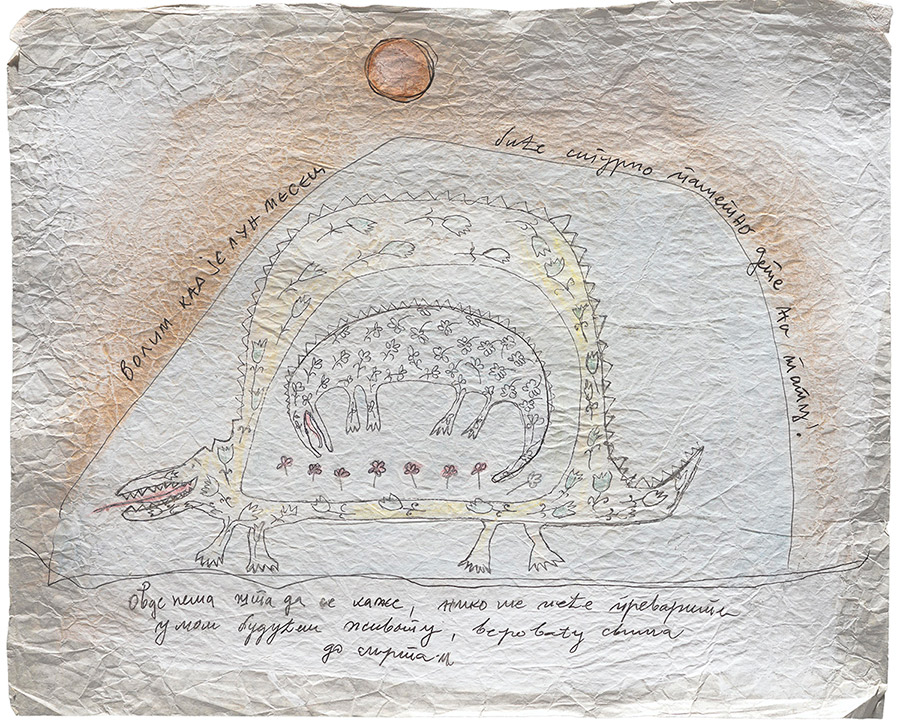From intimate to public
Efimija Topolski
Thinking Searching Waiting
31. 05 - 24. 06. 2018

Curated by ds art, Binningen within the project „From Intimate to Public“, pieces by the artist Efimija Topolski are exhibited in two Basle shop windows on Sattelgasse 4 (Ramstein Optik) and Blumenrain 32 (Boss-Rahmenkunst)
Intimacy and Openness
For exhibition “Thinking Searching Waiting” by Efimija Topolski
download media textA Serbian national, Jasna Topolski, was 26 years old with a promising art career when she retreated from society and entered the Christian-orthodox convent of Gradac in 1992, becoming Mother Efimija and 4 years later Reverend Mother Superior. Alongside her duties as a nun, she pursued her art, looking into contemporary ways of expressing traditional iconography. Instead of stern looking saints with heavy, dark circles under their eyes and hollow cheeks, displayed on paintings with ornate golden frames, Efimija envisioned amicable pain and joyfulness. In 2016 she left Gradac and moved to the Uchon Monastery in Burgundy, France.
The exhibition in Basel is a great opportunity to see some of her most powerful artworks for the first time. Artworks will be exhibited in retail display windows as part of the open, public space.
The obvious contrast between “intimate” and “open” is interconnected. The emotional artwork touches everyone who stops and looks at them. Just like Romanesque sculptures, the drawings express archaic and existential feelings in their direct, simple, childlike and emotional intensive imagery.
In the heart of it lies a life of creative controversy, the space between the internal and external, and above all, the “inbetweenness”. There is the pain of loneliness (image1), the yearning for relationships within enclosed structures (image 3), and for shelter and safety (image 5). The contrast is always there, thus the outer world without the structure and the exhilarating feeling of freedom can initiate new experiences (image 6). However, there is a danger of feeling exposed and lost (image 2) without these safe places. The animals depicted in her drawings are carriers of different emotional situations. This does not mean that Efimija Topolski humanizes the sheep, dogs, horses, crocodiles, fish or any other animals depicted in her artwork, instead they serve as a juxtaposition of our own feelings. For Topolski, the animals and nature with its plants and flowers represent all that is alive, including humans, with whom she shares her sensitivity. The animals, as well as humans, feel alone and exposed without their own counterpart, and they also experience joy and curiosity during the contact. Some of the drawings are almost abstract (image 4) and they share the expression of feelings in different situations.

1. “Another horrible night, without hope”, 1990
Loneliness and Hopelessness
A crocodile is so stranded on a big, dark hill from which he cannot move. The tip of its jaw juts out from the hill in the dark of the night in a pale moon. The animal cannot go any further, not with dangerous, white teeth and not with the power of the live shimmering warmth of its belly for both soon will be exhausted.

2. “Longing VII (Peter)”, 1990
Exposed
The shivering sheep seems exposed and lost without the protective environment. There is a storm, it seems cold, its body loses warmth, its fur matts together and the thin tail flies in the gusty air, it can hardly stay on its legs, even the tree behind the animal tosses in the wind. Is this the freedom it longed for? Where is “Peter”, that the “longing” in the title is calling? Is he coming at all?

3. “Longing III (Boar)”, 1990
Longing for another
The closed structures could evoke the feeling of confinement. The artwork “Longing III (boar)”, 1990 [Cat.,S. 109] shows an animal with a limp tail in one such situation. Two surface areas hold it tight, the inner keeping its rear end contained. The spikes, which it perhaps used at the time when it was free, are not a part of it anymore. It cries out to the three introverted elongated figures that are under the grey, pale moonlight. The animal stands stiffly on its thin legs; there is no space to move and there is no way to escape this prison.

4. “Tree”, 1990
Loneliness
In the arrangement made of abstract tables and empty chairs, we can see in one corner protruding fingers from one lonely hand, searching for another. However, there are seven fingers, so this seems to be the brunches of the Tree in the title. Lonely and unrelated it stands there within the inanimate order of enclosed space.

5. “I love the full moon!”, 2016
Protection and Security
The outer space represents the border between the outside world and the inside world of a expansive mother- to-be crocodile-like animal. The second is in the form of a body outline, building a hollow space filled with flowers, which, in addition, leads to another space, where the crocodile child turns longingly towards the little flowers from the bottom of its mother’s uterus. They seem to be its food.

6. “The dog (hound)” 2017
Curiosity
“What are you lovely flowers doing here?” as if the dog standing in front of a cluster of flowers keeps on asking, its neck holding back a little, but his legs planted solidly. The drawing’s yellow-orange- pink gamma indicates one careful but curious and anxious encounter in the freedom of a world without enclosures.
